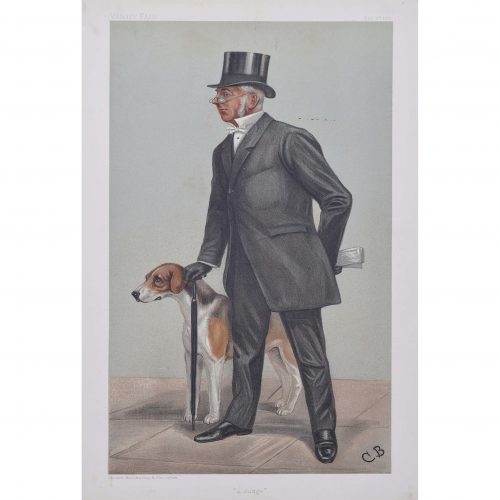-
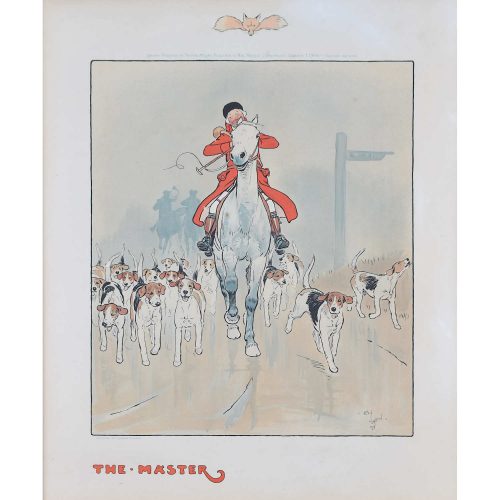
Cecil Aldin (1870 - 1935)
The Master
Lithograph 48 x 40 cm A jolly lithograph of an MFH and his hounds. Cecil Charles Windsor Aldin was a British artist and illustrator best known for his paintings and sketches of animals, sports, and rural life. Aldin executed village scenes and rural buildings in chalk, pencil, and also wash sketching. He was an enthusiastic sportsman and a Master of Fox Hounds, and many of his pictures illustrated hunting. Aldin's early influences included Randolph Caldecott and John Leech. Condition: generally very good, a few marks to margins, one or two marks to frame. -
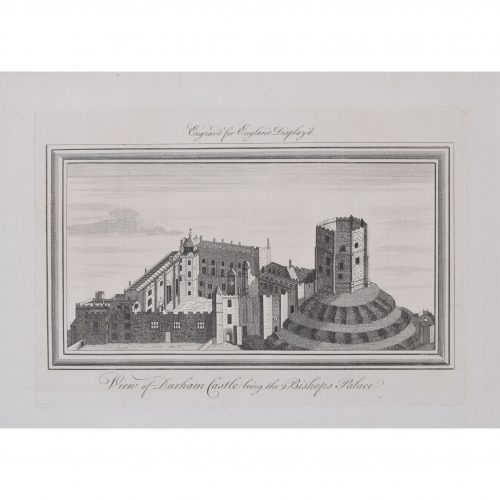
after Samuel Buck (1696 - 1779) and Nathaniel Buck (active 1724 - 1759)
View of Durham Castle being the Bishops Palace (1769)
Engraving 18 x 26 cm An engraved view of Durham Castle, complete with engraved frame in the plate. Empty of any inhabitants, the magnificence of the castle's architecture, is made all the more evident. This engraving was produced for 'England Displayed, published in London in 1769 or 1770 by Adlard and Brown; it was made after the original by Samuel and Nathaniel Buck, originally published in their 'Views of Ruins of Castles & Abbeys in England', created between 1726 and 1742. Durham Castle is a Norman castle in Durham, England, which has been occupied since 1837 by Castle - that is, University College, Durham. Previously, it was the residence of the Bishops of Durham; it stands on top of a hill above the River Wear on Durham's peninsula, opposite Durham Cathedral. Samuel and Nathaniel Buck were brothers and notable 18th century architectural artists, best known for their depictions of ancient castles and monasteries entitled 'Buck's Antiquities' and those of townscapes of England and Wales, ''Sea-Ports and Capital Towns''. LIttle is known about the brothers' lives. Samuel was born in Yorkshire and died in penury in London in 1779, and was buried in the churchyard of St Clement Danes. Nathaniel pre-deceased him, dying between 1759 and 1774. Condition: very good. If you’d like to know more, please email info@manningfineart.co.uk or call us on 07929 749056. -
Out of stock
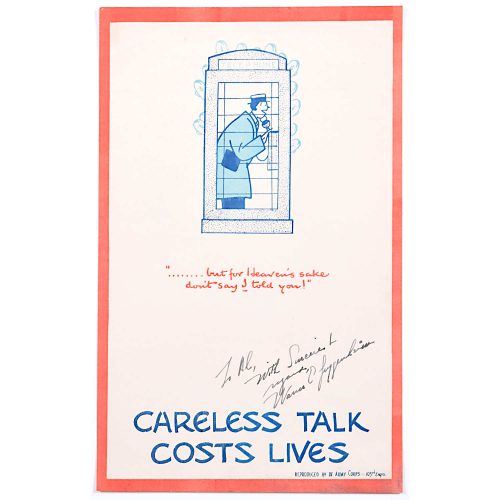
Cyril Kenneth Bird ‘Fougasse’ (British, 1887-1965) Careless Talk Costs Lives VII
Lithographic poster c.1940 32 x 20 cm (12.5 x 8 in) Reprinted by the IV Army Corps by the 103rd Engineers Lacking the normal Fougasse edition, the IV Army Corps commissioned their Engineers - the 103rd Engineers - to produce their own edition. Indescribably rare, one of the ones in this series is inscribed 'To Al, with sincerest regards Warren C Guggenheim'. The cartoonist Fougasse, was a British cartoonist who was art editor of Punch 1937-1949, and subsequently editor until 1953. He is best known for his ‘Careless Talk Costs Lives’ series of posters, and the other posters both for the Ministry of Information, London Underground and others. The Ministry of Information’s wartime poster campaign was soon regarded as dull and uninspiring on account of its hectoring messages such as ‘Keep Calm and Carry On.’ There were posters telling the population how to conduct virtually every minute of their daily lives – for instance by saving old clothes for rags, turning off the lights, saving food, digging for victory, or watching out for spies. With this instruction overload the population ceased paying attention to the posters, so Fougasse offered his services to the Ministry of Information unpaid, with a view to bringing a touch of humour to serious messages. An amusing picture and a pithy caption helped to get the message across to the reader. His distinctive style, with the red border, was adopted by other Ministry artists. If you are interested email info@manningfineart.co.uk or call us on 07929 749056. Condition: Generally very good, a few very soft creases as normal. -
Out of stock
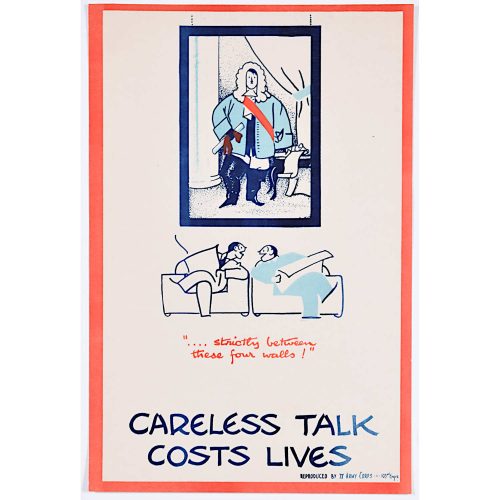
Cyril Kenneth Bird ‘Fougasse’ (British, 1887-1965) Careless Talk Costs Lives VI
Lithographic poster c.1940 32 x 20 cm (12.5 x 8 in) Reprinted by the IV Army Corps by the 103rd Engineers Lacking the normal Fougasse edition, the IV Army Corps commissioned their Engineers - the 103rd Engineers - to produce their own edition. Indescribably rare, one of the ones in this series is inscribed 'To Al, with sincerest regards Warren C Guggenheim'. The cartoonist Fougasse, was a British cartoonist who was art editor of Punch 1937-1949, and subsequently editor until 1953. He is best known for his ‘Careless Talk Costs Lives’ series of posters, and the other posters both for the Ministry of Information, London Underground and others. The Ministry of Information’s wartime poster campaign was soon regarded as dull and uninspiring on account of its hectoring messages such as ‘Keep Calm and Carry On.’ There were posters telling the population how to conduct virtually every minute of their daily lives – for instance by saving old clothes for rags, turning off the lights, saving food, digging for victory, or watching out for spies. With this instruction overload the population ceased paying attention to the posters, so Fougasse offered his services to the Ministry of Information unpaid, with a view to bringing a touch of humour to serious messages. An amusing picture and a pithy caption helped to get the message across to the reader. His distinctive style, with the red border, was adopted by other Ministry artists. If you are interested email info@manningfineart.co.uk or call us on 07929 749056. Condition: Generally very good, a few very soft creases as normal. -
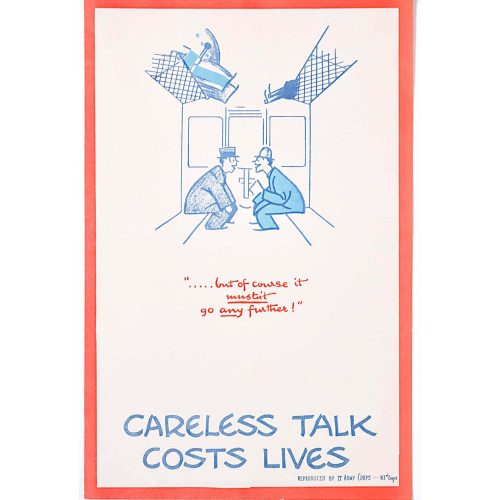
Cyril Kenneth Bird ‘Fougasse’ (British, 1887-1965) Careless Talk Costs Lives V
Lithographic poster c.1940 32 x 20 cm (12.5 x 8 in) Reprinted by the IV Army Corps by the 103rd Engineers Lacking the normal Fougasse edition, the IV Army Corps commissioned their Engineers - the 103rd Engineers - to produce their own edition. Indescribably rare, one of the ones in this series is inscribed 'To Al, with sincerest regards Warren C Guggenheim'. The cartoonist Fougasse, was a British cartoonist who was art editor of Punch 1937-1949, and subsequently editor until 1953. He is best known for his ‘Careless Talk Costs Lives’ series of posters, and the other posters both for the Ministry of Information, London Underground and others. The Ministry of Information’s wartime poster campaign was soon regarded as dull and uninspiring on account of its hectoring messages such as ‘Keep Calm and Carry On.’ There were posters telling the population how to conduct virtually every minute of their daily lives – for instance by saving old clothes for rags, turning off the lights, saving food, digging for victory, or watching out for spies. With this instruction overload the population ceased paying attention to the posters, so Fougasse offered his services to the Ministry of Information unpaid, with a view to bringing a touch of humour to serious messages. An amusing picture and a pithy caption helped to get the message across to the reader. His distinctive style, with the red border, was adopted by other Ministry artists. If you are interested email info@manningfineart.co.uk or call us on 07929 749056. Condition: Generally very good, a few very soft creases as normal. -
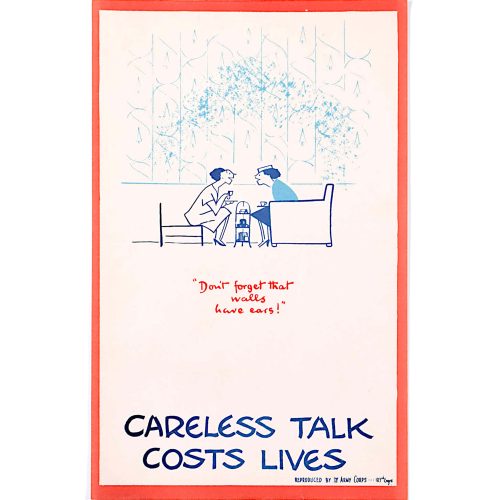
Cyril Kenneth Bird ‘Fougasse’ (British, 1887-1965) Careless Talk Costs Lives IV
Lithographic poster c.1940 32 x 20 cm (12.5 x 8 in) Reprinted by the IV Army Corps by the 103rd Engineers Lacking the normal Fougasse edition, the IV Army Corps commissioned their Engineers - the 103rd Engineers - to produce their own edition. Indescribably rare, one of the ones in this series is inscribed 'To Al, with sincerest regards Warren C Guggenheim'. The cartoonist Fougasse, was a British cartoonist who was art editor of Punch 1937-1949, and subsequently editor until 1953. He is best known for his ‘Careless Talk Costs Lives’ series of posters, and the other posters both for the Ministry of Information, London Underground and others. The Ministry of Information’s wartime poster campaign was soon regarded as dull and uninspiring on account of its hectoring messages such as ‘Keep Calm and Carry On.’ There were posters telling the population how to conduct virtually every minute of their daily lives – for instance by saving old clothes for rags, turning off the lights, saving food, digging for victory, or watching out for spies. With this instruction overload the population ceased paying attention to the posters, so Fougasse offered his services to the Ministry of Information unpaid, with a view to bringing a touch of humour to serious messages. An amusing picture and a pithy caption helped to get the message across to the reader. His distinctive style, with the red border, was adopted by other Ministry artists. If you are interested email info@manningfineart.co.uk or call us on 07929 749056. Condition: Generally very good, a few very soft creases as normal. -
Out of stock
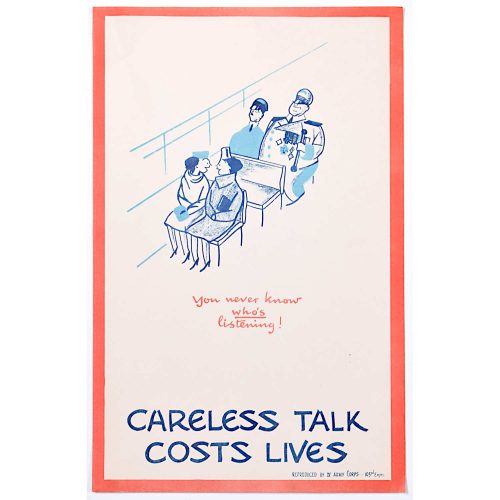
Cyril Kenneth Bird ‘Fougasse’ (British, 1887-1965) Careless Talk Costs Lives III
Lithographic poster c.1940 32 x 20 cm (12.5 x 8 in) Reprinted by the IV Army Corps by the 103rd Engineers Lacking the normal Fougasse edition, the IV Army Corps commissioned their Engineers - the 103rd Engineers - to produce their own edition. Indescribably rare, one of the ones in this series is inscribed 'To Al, with sincerest regards Warren C Guggenheim'. The cartoonist Fougasse, was a British cartoonist who was art editor of Punch 1937-1949, and subsequently editor until 1953. He is best known for his ‘Careless Talk Costs Lives’ series of posters, and the other posters both for the Ministry of Information, London Underground and others. The Ministry of Information’s wartime poster campaign was soon regarded as dull and uninspiring on account of its hectoring messages such as ‘Keep Calm and Carry On.’ There were posters telling the population how to conduct virtually every minute of their daily lives – for instance by saving old clothes for rags, turning off the lights, saving food, digging for victory, or watching out for spies. With this instruction overload the population ceased paying attention to the posters, so Fougasse offered his services to the Ministry of Information unpaid, with a view to bringing a touch of humour to serious messages. An amusing picture and a pithy caption helped to get the message across to the reader. His distinctive style, with the red border, was adopted by other Ministry artists. If you are interested email info@manningfineart.co.uk or call us on 07929 749056. Condition: Generally very good, a few very soft creases as normal. -

Anon.
Camden Festival Routemaster
Slipboard Poster c.1970 Screenprint poster 64x9cm In a black hand-finished frame. Printed for London Transport for use on Routemaster or RT buses. If you are interested email info@manningfineart.co.uk or call us on 07929 749056. Condition: Excellent. -

William Kip (active 1598 - 1610) after Christopher Saxton (1540 - 1610)
Map of Cambridgeshire (1637)
Engraving with later hand colouring 29 x 32 cm An antique map of Cambridgeshire. The map was originally published in William Camden's atlas 'Britannia', which was first published in 1586. William Kip was a goldsmith and map engraver. He was born in Utrecht in the Netherlands and moved to London to pursue his career as an engraver. Alongside William Hole, Kip re-engraved Christopher Saxton's 1574 county maps for publication in Camden's 'Britannia', and it is this venture for which he is most well-known. Christopher Saxton was an English cartographer who produced the first county maps of England and Wales. Between 1574 and 1578 he engraved maps of every county in Britain, and compiled them into an atlas in 1579. These maps bore Queen Elizabeth I's arms as well as those of Saxton's patron, Thomas Seckford. Condition: generally good; faint evidence of old staining. If you are interested, please email info@manningfineart.co.uk or call us on 07929 749056. Click here for more maps and general pictures of Cambridge. -
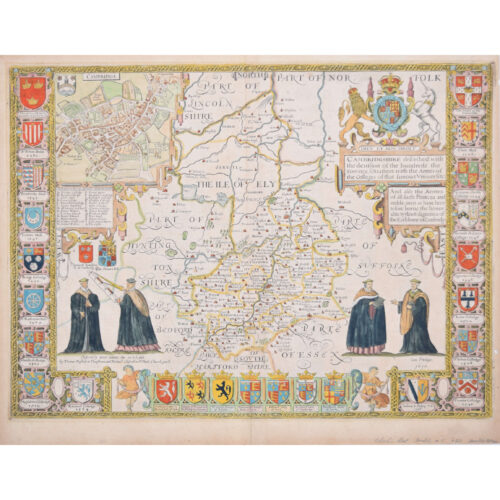
John Speed (1551 or 1552 - 1629)
Map of Cambridgeshire
Engraving with later hand colouring 39 x 53 cm A beautifully coloured map of Cambridgeshire, with an antique description of the county to the reverse. The map, along with many others, was published in Speed's atlas, 'The Theatre of the Empire of Great Britaine', first published in 1611. The map is populated by four figures in academic dress, and bordered on all sides by college crests. John Speed was an English cartographer, chronologer and historian. The son of a citizen and Merchant Taylor in London, he rose from his family occupation to accept the task of drawing together and revising the histories, topographies and maps of the Kingdoms of Great Britain as an exposition of the union of their monarchies in the person of King James I and VI. He accomplished this with remarkable success, with the support and assistance of the leading antiquarian scholars of his generation. He drew upon and improved the shire maps of Christopher Saxton, John Norden and others, being the first to incorporate the hundred-boundaries into them, and he was the surveyor and originator of many of the town or city plans inset within them. His work helped to define early modern concepts of British national identity. His Biblical genealogies were also formally associated with the first edition of the King James Bible. He is among the most famous of English mapmakers. Condition: generally very good; one tiny hole to right side just beyond plate mark. If you’d like to know more, please email info@manningfineart.co.uk or call us on 07929 749056. Click here for more Cambridge pictures. -
Out of stock
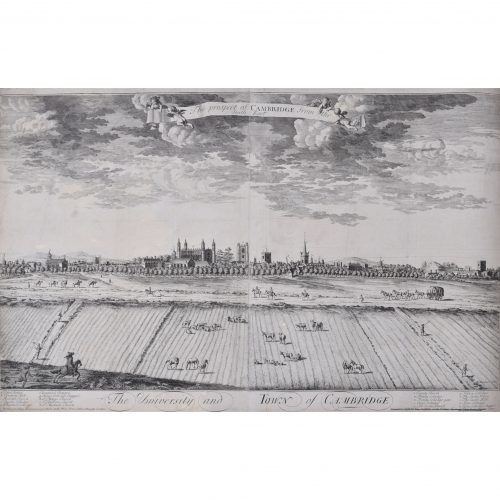
Johannes Kip (1652 - 1722) after R Whitehand
Prospect of Cambridge from the South East (1724)
Engraving 57 x 88 cm A view of the city of Cambridge, replete with college spires, by Johannes ''Jan'' Kip, the Dutch draughtsman, engraver and print dealer. The engraving illustrates an 18th century Cambridge defined by livestock and farmhands, as well as its University. The largest and best view of Cambridge, extremely rare - we have not traced any other copies at auction. Condition: good. Previously folded, occasional small losses and the odd slightly toned patch; two joined sheets. Trimmed to within platemark; very rare. If you’d like to know more, please email info@manningfineart.co.uk or call us on 07929 749056. -
Out of stock
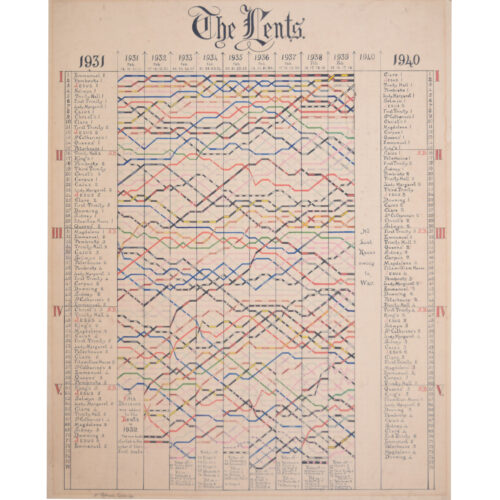
V Robinson
The Lent Bumps 1931 - 1940
Pen, ink and watercolour 60 x 48 cm A hand-painted chart illustrating the results of the Lent Bumps from 1931 to 1939, with a note that in 1940 there were 'No Lent Races due to War'. The Lent Bumps, also known as "Lents" or the Lent Races are a set of University of Cambridge rowing races held each year on the River Cam. The races are open to all college boat clubs from the University of Cambridge, the University Medical and Veterinary Schools and Anglia Ruskin Boat Club. The Lent Bumps take place over five days (Tuesday to Saturday) at the end of February / start of March and are run as bumps races (of rowing race in which a number of boats chase each other in single file, each crew attempting to catch and 'bump' the boat in front without being caught by the boat behind). The men's races officially began in 1887 and the women's in 1976. Condition: generally good; some age toning to board and a little staining to the margins that will be hidden by a mount. If you are interested, please email info@manningfineart.co.uk or call us on 07929 749056. Click here for other Cambridge pictures. -
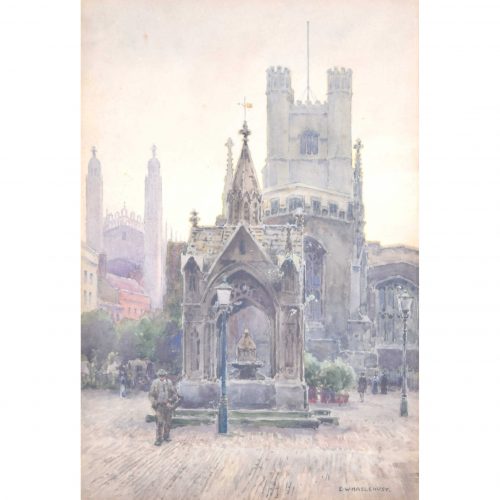
Ernest William Haslehurst (1866 - 1949)
The Market Place, Cambridge, with a view of Great St Mary’s Church and King's College Chapel
Watercolour 33.5 x 23 cm Haslehurst's watercolour of Cambridge's marketplace, overlooked by the spires of King's College Chapel and Great St Mary's. Ernest William Haslehust was an English landscape painter and book illustrator who worked in watercolours. He was a member of the Royal Institute of Painters in Water Colours (RI), Royal Society of British Artists (RBA), Royal West of England Academy (RWA) and Royal British Colonial Society of Artists (RBC), and exhibited regularly at many venues including the Royal Academy in London. He also designed posters for the LNER and LMS railway companies, and his art was featured in many magazines of the day including the Illustrated London News and The Tatler. Condition: generally good. Some spotting. If you’d like to know more, please email info@manningfineart.co.uk or call us on 07929 749056. -
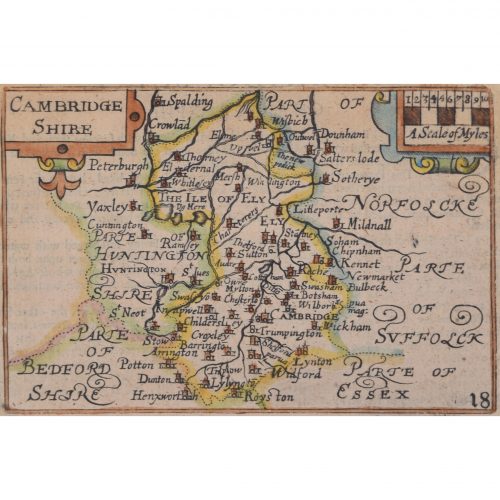
Pieter van den Keere (1571 - circa 1646) after John Speed (1551 or 1552 - 1629)
Map of Cambridgeshire (1627)
Engraving 8 x 12 cm A beautifully coloured map of Cambridgeshire, with an antique description of the county to the reverse. The map, along with many others, was published in Speed's atlas, 'The Theatre of the Empire of Great Britaine', first published in 1611. This particular miniature edition of the 'Theatre' was published in miniature by George Humble in 1627, entitled 'England Wales Scotland and Ireland Described and Abridged With ye Historic Relation of things worthy memory from a farr larger Voulume. Done by John Speed.’ Speed's original map was likely engraved for this edition by Peter van den Keere. van den Keere's maps soon came to be known as "Miniature Speeds". John Speed was an English cartographer, chronologer and historian. The son of a citizen and Merchant Taylor in London, he rose from his family occupation to accept the task of drawing together and revising the histories, topographies and maps of the Kingdoms of Great Britain as an exposition of the union of their monarchies in the person of King James I and VI. He accomplished this with remarkable success, with the support and assistance of the leading antiquarian scholars of his generation. He drew upon and improved the shire maps of Christopher Saxton, John Norden and others, being the first to incorporate the hundred-boundaries into them, and he was the surveyor and originator of many of the town or city plans inset within them. His work helped to define early modern concepts of British national identity. His Biblical genealogies were also formally associated with the first edition of the King James Bible. He is among the most famous of English mapmakers. George Humble (1572 - 1640) was an English publisher, known for his publication of John Speed's 'The theatre of the empire of Great Britaine,' the first comprehensive atlas depicting the British Isles, and his later 'A prospect of the most famous parts of the World,' the first English world atlas. Pieter van den Keere was a Flemish engraver, publisher, and globe maker who worked in England and the Dutch Republic. Condition: generally very good; some age toning. If you’d like to know more, please email info@manningfineart.co.uk or call us on 07929 749056. -
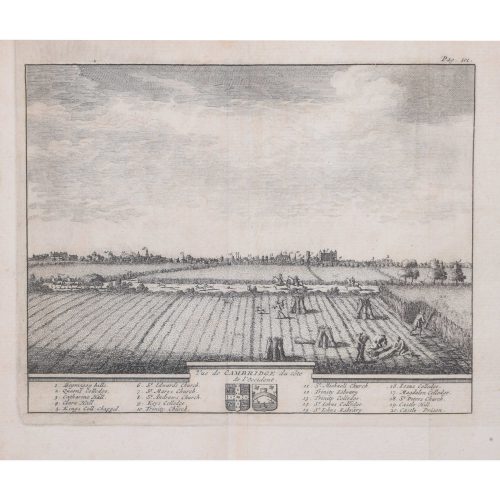
Pieter van der Aa (1659-1733), after David Loggan (1634–1692)
Cambridge from the East (1727)
Engraving 12 x 16 cm An eighteenth-century view of Cambridge from the East, engraved by Pieter van der Aa after David Loggan, the noted engraver, draughtsman, and painter who specialised in engravings of Oxford and Cambridge. A wide Cambridgeshire sky opens out over the harvest scene; in the background, the spires of the city's skyline are numbered, and identified below. A fascinating engraving which muses on the relationship between the city and its University. Pieter van der Aa of Leiden was a Dutch publisher best known for preparing maps and atlases, though he also printed editions of foreign bestsellers and illustrated volumes. He is noted for the many engravings he produced after David Loggan's series of Oxford and Cambridge colleges and costumes. In 1727 Van Der Aa illustrated "Les Delices de la Grande Bretagne & de L'Irelande" by James Beeverell, the book in which this engraving appears. Condition: generally very good. If you’d like to know more, please email info@manningfineart.co.uk or call us on 07929 749056. -
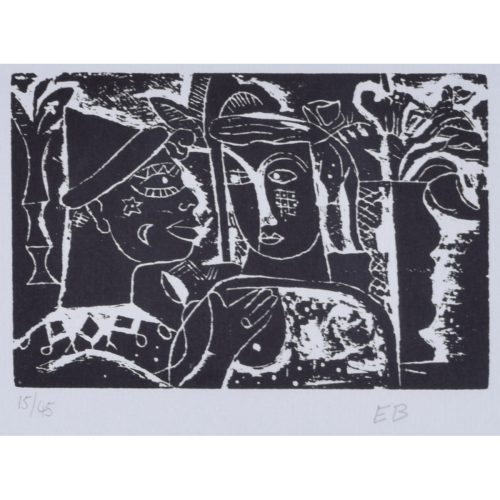
Edward Burra (1905 - 1976)
Café
(1928 - 1929, this edition published 1971) Woodcut 10 x 15 cm; sheet size 24 x 34 cm Numbered 15/45 lower left and initialled EB lower right. Published by the Nicholas Treadwell Gallery in 1971. Burra's woodcut of a male and a female figure, entitled 'Café'. The two figures, seemingly a couple, gaze at one another intensely and intimately, giving the impression of having been interrupted by the viewer. Both figures' faces bear tattoo-like markings: he a star and the moon, she a geometric design resembling a noughts-and-crosses board. The "café" in which they sit is a dreamily abstract landscape full of palms and other plants from the tropics. Edward Burra was an English painter, draughtsman, and printmaker. He travelled to Italy in 1925, the same year he met the noted British Surrealist Paul Nash, and both of these influences are evident in this woodcut. Nash introduced Burra to woodcut-making in 1928, the same year that Burra began this woodcut series. His first solo show was held at the Leicester Galleries in April 1929, and he exhibited with the English Surrealists in the 1930s. Condition: Excellent. If you’d like to know more, please email info@manningfineart.co.uk or call us on 07929 749056. -
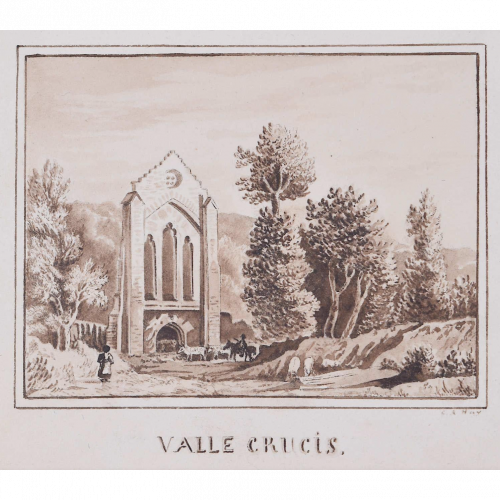
C.A. Hay
Valle Crucis Abbey, Wales (early 19th century)
Pen, ink and monochrome watercolour 8 x 12 cm Valle Crucis is a Cistercian abbey located in Llantysilio in Denbighshire, Wales. The abbey was built in 1201 by Madog ap Gruffydd Maelor, Prince of Powys Fadog. In 1537, at the height of Henry VIII's Dissolution of the Monasteries, Valle Crucis was dissolved and fell into disrepair. The abbey is now a ruin, though large parts of the original structure still survive. We also have in stock an en-suite watercolour of the nearby Llangollen Bridge; it is likely that some of the abbey's stone was used to build the bridge after the abbey had been dissolved. Condition: Generally very good. Signed lower right. -
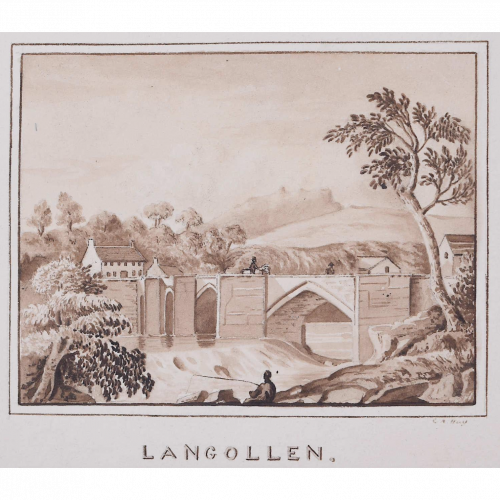
C.A. Hay
Llangollen Bridge, Wales (early 19th century)
Pen, ink and monochrome watercolour 8 x 12 cm Llangollen Bridge is built across the River Dee at the North end of the high street of Llangollen in the county of Denbigshire in Wales. The Bridge is listed as one of the seven wonders of Wales and is Grade I listed. There has been a bridge across the Dee at Llangollen since at least 1284. Some historians believe that the bridge was constructed in the 1540s; there is evidence of sepulchral slabs within the bridge's masonry, indicating that it was rebuilt following the dissolution of Henry VIII's dissolution of the monasteries. We also have in stock an en-suite watercolour of the nearby Valle Crucis abbey, from which some of the bridge's stone might have been taken. Condition: Generally very good. Signed lower right. -
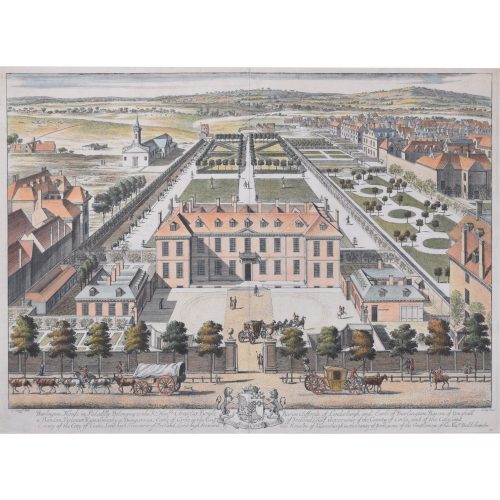
Johannes Kip (1652 - 1722) and Leonard Knyff (1650 - 1722)
Burlington House (1707)
Engraving with later hand-colouring 36 x 50 cm The linked careers of Jan Kip and Leonard Knyff made a specialty of engraved views of English country houses, represented in detail from the bird's-eye view, a pictorial convention for topography. Their major work was Britannia Illustrata: Or Views of Several of the Queens Palaces, as Also of the Principal seats of the Nobility and Gentry of Great Britain, Curiously Engraven on 80 Copper Plates, London (1707, published in the winter of 1708-9). The volume is among the most important English topographical publications of the 18th century. Architecture is rendered with care, and the settings of parterres and radiating avenues driven through woods or planted across fields, garden paths, gates and toolsheds are illustrated in detail. The images are staffed with figures and horses, coaches pulling into forecourts, water-craft on rivers, in line with the traditions of the Low Countries. The inscription in the plate reads: Burlington House in Pickadilly Belonging to the R.t Honble Charles Boyle Baron Clifforde of Londesburgh, and Earle of Burlington Baron of younghall & Bandon, Viscount Kynalmeaky & Dungarvan, Earle of Corke in the Kingdom of Ireland, Chief Governour of the County of Corke, and the Citty, and County of the Citty of Corke, Lord high Treasurer of Ireland, Lord high Steward of the Royalty of Knaresburgh in the County of Yorke, & one of the Gentlemen of his Majties Beddchamber. Condition: recent hand colouring, with wash-lined mount. If you’d like to know more, please email info@manningfineart.co.uk or call us on 07929 749056. -
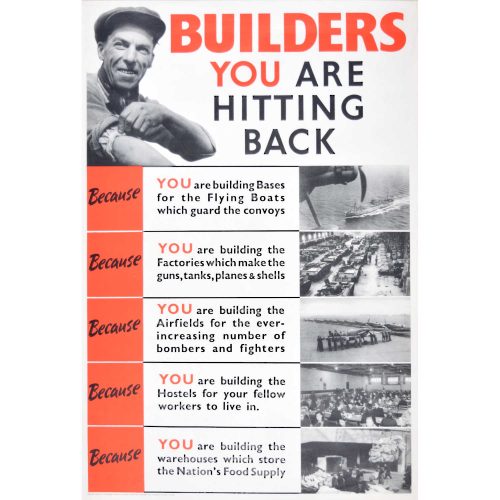
Builders YOU Are Hitting Back Original WW2 Poster (c.1940)
'Builders - YOU Are Hitting Back' Original WW2 Poster (c.1940) 76 x 50.5 cm Lithograph and letterpress (on paper) Printed by Lowe and Brydone Printers Ltd, London NW10. Published by HM Stationery Office. Because: You are building bases for the Flying Boats which guard the convoys You are building the Factories which makes the guns, tanks, planes & shells You are building the Airfields for the ever increasing number of bombers and fighters - Spitfire You are building the Hostels for your fellow workers to live in You are building the warehouses which store the Nation's Food Supply -
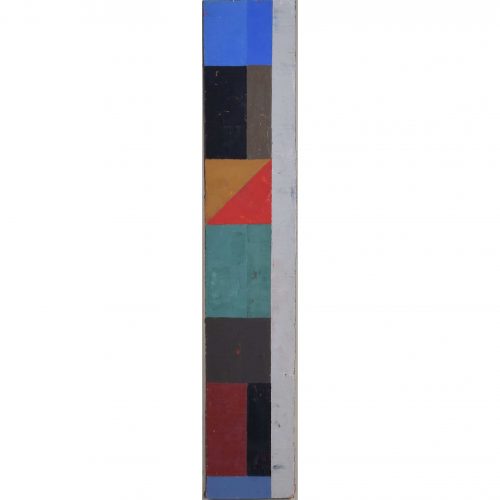
Bryan Ingham (1936-1997)
Erotische Bild (1988)
Oil on board 62 x 11 cm Provenance: Fracis Graham-Dixon gallery. Titled to backboard and dated 1988. Bryan Ingham was born in Yorkshire. For his National Service he joined the RAF, and spent his time in Germany as an airman. After demobilisation, his final report included the statement that "Ingham is an artistic sort of airman." In his spare time he had started painting in oils, and by the time he left the RAF he had completed a large number of paintings. He studied at St Martin's School of Art in London, where he had the tuition of a fine post-war generation of teachers who helped him to hone his draughtsmanship and other skills, and he swiftly showed a capacity for painting that drew the attention of his tutors and peers. On graduating he was offered and accepted a post-graduate place at the Royal College of Art, where in his second year he was awarded a Royal Scholarship and was a contemporary of a number of now better-known names including David Hockney. Ingham applied for and received a Leverhulme travel award to explore the sites of the great Renaissance painters, and spent many happy months engaged in this expedition. He spent time at the English Art school in Rome, where he lived well and busied himself the same studio that Barbara Hepworth had used. At this stage of his career, Ingham consciously rejected the prospect of pursuing a career as an establishment artist, although the RA was open to him, and he went to live in remote cottage in Cornwall. The subsequent years were varied and highly productive, and Ingham's personal artistic voice emerged in his oeuvre in the form of an always-developing dialogue with influences both of landscape and other artists of every age. His preoccupation with etching resulted in several hundred plates, some very large, and the results are as unmistakable as they are varied, but invariably of outstanding quality. He produced a number of sculptures in bronze and in plaster, while his lifelong output of paintings remained small but again of very high quality. He taught etching regularly until about 5 years before his death, latterly at Falmouth Art School, and also at Farnham Art College. During the late eighties he established a relationship with the art dealer Francis Graham-Dixon, who had a London gallery. This meant that his paintings were professionally marketed for the first time, and prices for his work rose steadily in the last ten years of his life, and subsequently. He was able to purchase a cottage in Helston for his parents, who lived there until their deaths. He then moved into a fine set of converted-barn studios with a patch of garden, quietly situated off the High St in Helston, and it was here, on 22 September 1997, that he died, having quietly suffered from cancer for nearly a year. Condition: Generally very good, scrapes to board as intended by artist. Framed. If you'd like to know more, please email info@manningfineart.co.uk or call us on 07929 749056. -

Bryan Ingham (1936-1997)
Upright Jug (1993-95)
Pencil and oil on board 64 x 19 cm Provenance: Bohun Galleries, Paintings in Hospitals. Signed, titled and dated 1993-95 (on backboard). Bryan Ingham was born in Yorkshire. For his National Service he joined the RAF, and spent his time in Germany as an airman. After demobilisation, his final report included the statement that "Ingham is an artistic sort of airman." In his spare time he had started painting in oils, and by the time he left the RAF he had completed a large number of paintings. He studied at St Martin's School of Art in London, where he had the tuition of a fine post-war generation of teachers who helped him to hone his draughtsmanship and other skills, and he swiftly showed a capacity for painting that drew the attention of his tutors and peers. On graduating he was offered and accepted a post-graduate place at the Royal College of Art, where in his second year he was awarded a Royal Scholarship and was a contemporary of a number of now better-known names including David Hockney. Ingham applied for and received a Leverhulme travel award to explore the sites of the great Renaissance painters, and spent many happy months engaged in this expedition. He spent time at the English Art school in Rome, where he lived well and busied himself the same studio that Barbara Hepworth had used. At this stage of his career, Ingham consciously rejected the prospect of pursuing a career as an establishment artist, although the RA was open to him, and he went to live in remote cottage in Cornwall. The subsequent years were varied and highly productive, and Ingham's personal artistic voice emerged in his oeuvre in the form of an always-developing dialogue with influences both of landscape and other artists of every age. His preoccupation with etching resulted in several hundred plates, some very large, and the results are as unmistakable as they are varied, but invariably of outstanding quality. He produced a number of sculptures in bronze and in plaster, while his lifelong output of paintings remained small but again of very high quality. He taught etching regularly until about 5 years before his death, latterly at Falmouth Art School, and also at Farnham Art College. During the late eighties he established a relationship with the art dealer Francis Graham-Dixon, who had a London gallery. This meant that his paintings were professionally marketed for the first time, and prices for his work rose steadily in the last ten years of his life, and subsequently. He was able to purchase a cottage in Helston for his parents, who lived there until their deaths. He then moved into a fine set of converted-barn studios with a patch of garden, quietly situated off the High St in Helston, and it was here, on 22 September 1997, that he died, having quietly suffered from cancer for nearly a year. If you'd like to know more, please email info@manningfineart.co.uk or call us on 07929 749056. Condition: Generally excellent; framed. -
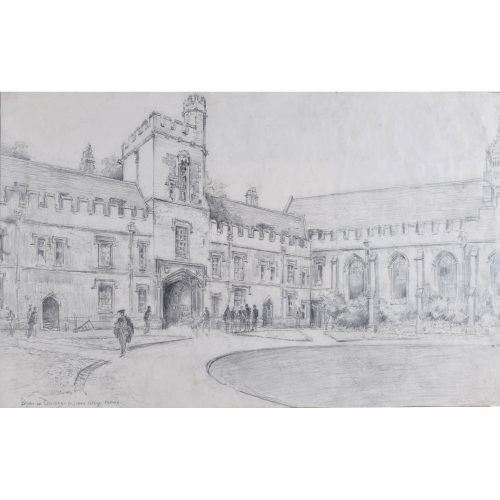
Bryan de Grineau (1883-1957)
St John’s College, Oxford for The Illustrated London News
Front Quad
Signed and inscribed Pencil Drawing published in The Illustrated London News 18 June 1955 33 x 52 cm (13 x 20.5 in.) Click here for other views of St John’s College by this artist and biographical details. If you are interested email info@manningfineart.co.uk or call us on 07929 749056. -
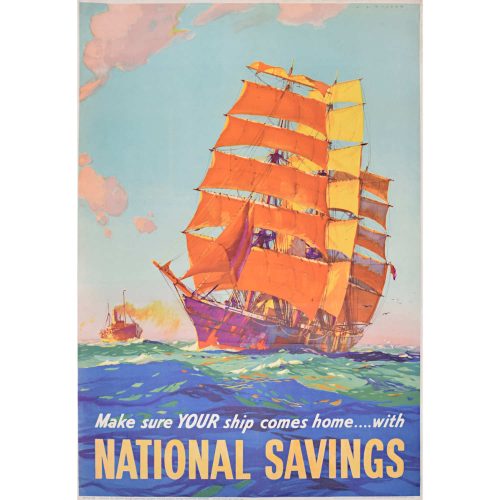
Leslie Arthur Wilcox RI RSMA (1904-1982) National Savings - Make Sure Your Ship Comes In
c.1945 75x50cm Original Vintage Poster During World War 2, the British Government had two particular financial problems addressed by this poster. There was little to buy, so the general populace had surplus cash to spend. If they spent it, this would be inflationary and would reduce the supply of items. Likewise, the Government needed money to spend on materiel and was short of cash. Encouraging the population to lend its spare cash to the Government was therefore a solution to this problem, and a series of posters - and other advertisings campaigns - aimed to address this point. For biographical details and other works by the artist click here. If you are interested email info@manningfineart.co.uk or call us on 07929 749056. Condition: Good. A few tiny tears to margin, not into image. -
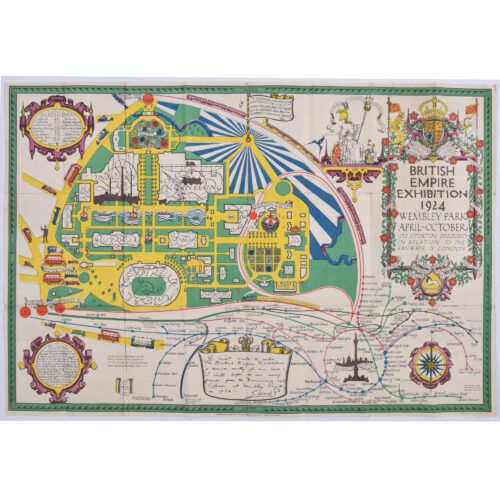
Stanley Kennedy North (1887 - 1942)
British Empire Exhibition Map (1924)
Lithograph 51 x 75 cm This fascinating and attractive map with elaborate cartouche highlights the attractions of the British Empire Exhibition, a showcase held in London to exhibit the fruits of Britain's overseas colonies. It was designed to boost support for the Empire's activities, encourage trade of imperial goods, and remind other world powers of Britain's (historic) colonial capacity. The Empire Stadium was built especially to house the exhibition; it is known today as Wembley Stadium. The exhibition was opened by King George V on St George's Day, 1924. Condition: generally good; folds as issued; a few short tears at corners. If you are interested, please email info@manningfineart.co.uk or call us on 07929 749056. Click here for other original vintage posters. -
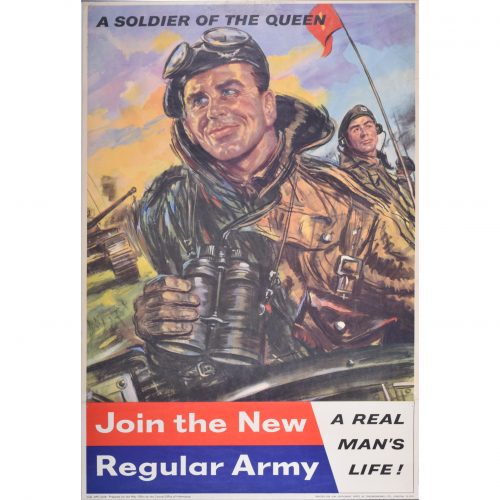
Attributed to John Worsley
Join the New Regular Army - A Real Man's Life
Published by Her Majesty’s Stationery Office. Printed by Chromoworks Limited, 1959 Lithographic poster 75x50cm Worsley was a war artist during World War II who was captured by the Germans and then an illustrator for Eagle comic. Click here for further biographical details and other posters by Worsley. The Soldier of the Queen depicted is a tank commander. At the time the poster was printed the main location for deployment of tanks was West Germany. In 1946 the British Army of the Rhine was created to protect Germany - and indeed Europe - from a Soviet invasion. Numbering up to 80,000 soldiers it was estimated that in the event of war the life expectancy of a tank commander would be less than two days. A Real Man's Life indeed. If you are interested email info@manningfineart.co.uk or call us on 07929 749056. -
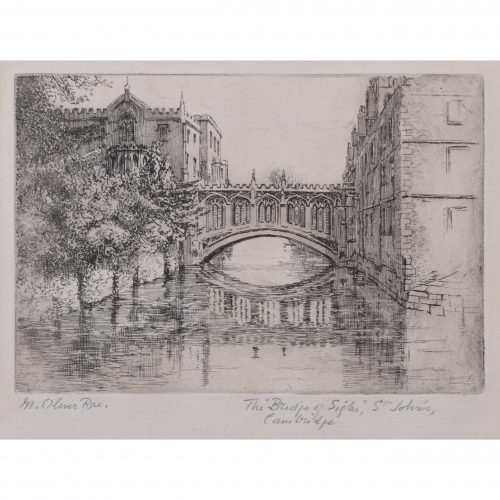
Mabel Oliver Rae (1868 - 1956)
The Bridge of Sighs, St John's College, Cambridge (circa 1920)
Etching 13 x 18 cm Hand-signed in pencil lower left, and titled in pencil lower right. Initialled 'MR' in plate lower left. The Bridge of Sighs is an iconic feature of St John’s College, and one of the most recognisable pieces of architecture in Cambridge. It was built in 1831 by the architect Henry Hutchinson and crosses the River Cam between the college's Third Court and New Court. It is the only covered bridge to cross the River Cam, and the only College bridge built in the Victorian Gothic style. Mabel Oliver Rae was born in Cambridge, Cambridgeshire, and trained at the Slade School of Fine Art between 1888 and 1890. Rae is known for her skilled etchings of various rural scenes and townscapes, particularly those of the colleges of Oxford and Cambridge. She signed works with the pseudonym 'M.Oliver Rae', a ruse to conceal the fact she was a female artist, so as not to reduce her chances with commercial dealers and agents. Condition: even age toning, a little spotting, generally good. If you’d like to know more, please email info@manningfineart.co.uk or call us on 07929 749056. -
 Brendon Neiland (b. 1941) Tom Tower Christ Church 38/195 Screenprint 66x58cm Here he surreally captures rippling reflection of Tom Tower in Christchurch. The style is emblematic of his later work that increasingly uses bold and dynamic colour palettes. For biographical details and other works by the artist click here. If you are interested email info@manningfineart.co.uk or call us on 07929 749056. Condition: Excellent.
Brendon Neiland (b. 1941) Tom Tower Christ Church 38/195 Screenprint 66x58cm Here he surreally captures rippling reflection of Tom Tower in Christchurch. The style is emblematic of his later work that increasingly uses bold and dynamic colour palettes. For biographical details and other works by the artist click here. If you are interested email info@manningfineart.co.uk or call us on 07929 749056. Condition: Excellent. -
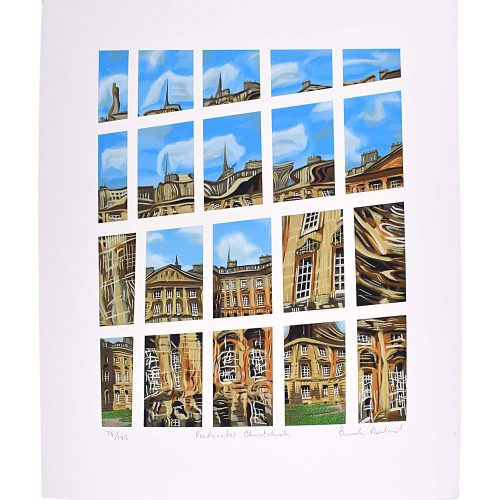
Brendon Neiland (b. 1941) Peckwater Christ Church 74/195
Screen print 68.5x56cm Here he surreally captures Peckwater Quad in Christchurch, experimenting with pictorial structure with vivacious dashes of blue, orange and yellow. It is emblematic of his later work that increasingly uses bold and dynamic colour palettes. For biographical details and other works by the artist click here. If you are interested email info@manningfineart.co.uk or call us on 07929 749056. Condition: Excellent. -
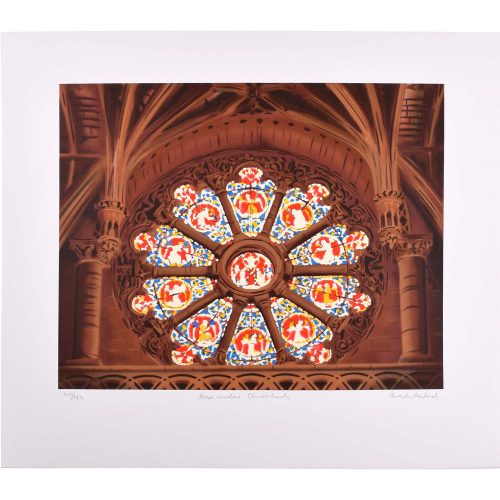
Brendon Neiland (b. 1941) Gilbert Scott's Rose Window Christ Church Oxford 106/195
Screenprint 66x58cm Here Neiland captures the colours of the new window installed in the cathedral by George Gilbert Scott (Junior) c. 1870. The style is emblematic of his later work that increasingly uses bold and dynamic colour palettes. For biographical details and other works by the artist click here. If you are interested email info@manningfineart.co.uk or call us on 07929 749056. Condition: Excellent. -
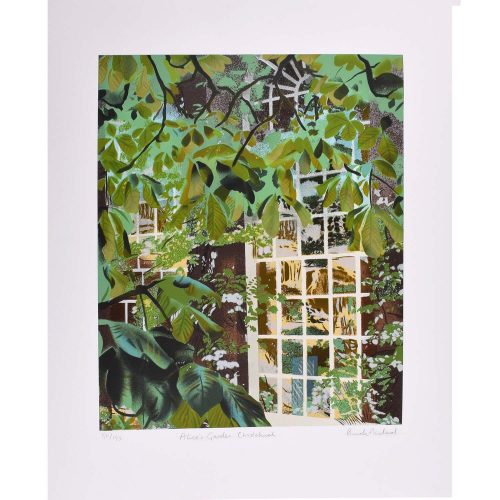
Brendon Neiland (b. 1941) Alice's Garden Oxford 50/195
Screenprint 66.5x57cm Here he surreally captures rippling reflection of Tom Tower in Christchurch. The style is emblematic of his later work that increasingly uses bold and dynamic colour palettes. For biographical details and other works by the artist click here. If you are interested email info@manningfineart.co.uk or call us on 07929 749056. Condition: Excellent. -
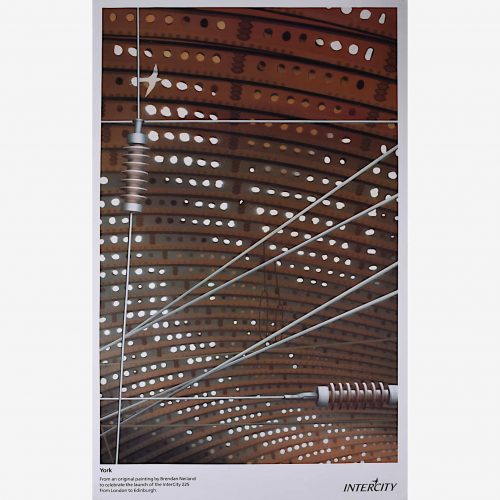
Brendan Neiland (b.1941)
York Intercity Poster
Original Vintage Poster - lithograph 102x64cm (40×25 inches) each 1991 Click here for biographical details and other works by the artist. If you are interested email info@manningfineart.co.uk or call us on 07929 749056. -

Brendan Neiland (b.1941)
Original Designs for Intercity Posters - Edinburgh and York
Collage, spraypaint and cut out 91x58cm (36×23 inches) each 1991 Click here for biographical details and other works by the artist. If you are interested email info@manningfineart.co.uk or call us on 07929 749056. -
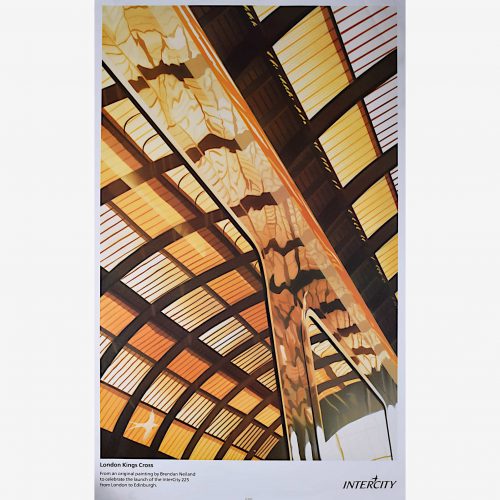
Brendan Neiland (b.1941)
Kings Cross Intercity Poster
Original Vintage Poster - lithograph 102x64cm (40×25 inches) each 1991 Click here for biographical details and other works by the artist. If you are interested email info@manningfineart.co.uk or call us on 07929 749056. -
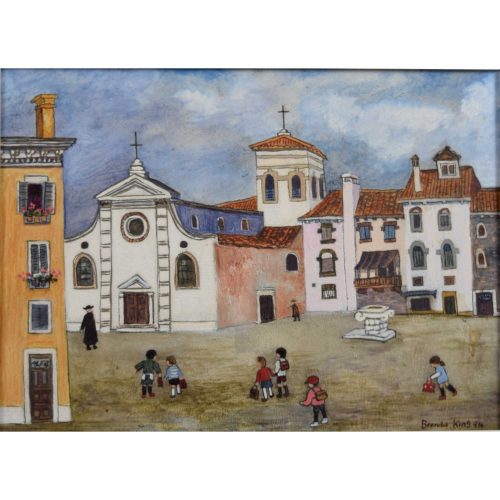
Brenda King (1934-2011)
Venetian Schoolchildren (1974)
Oil on board 16.5.x 20.5 cm Signed and dated lower right. Naive scene of school children in a Venetian square in a distinctive 1970s frame. Brenda King was born in Cumbria in 1934. She enrolled at the Lancaster College of Art from 1950 to 1954 before enrolling at the Royal Academy from 1954 to 1957, indeed, going on to exhibit frequently at the RA summer exhibition. She moved to Cornwall in 1975 with her landscape painter husband Jeremy King (b.1933), and the pair shared a studio in St Just, Lands End. Her distinctively naive and playful style, often capturing incidental figures in quaint, pastoral British scenes, is said to have been strongly influenced by the oils and watercolours of Helen Bradley (1900-1979), another Lancastrian. If you are interested e-mail info@manningfineart.co.uk or call us on 07929 749056 Condition: Generally excellent, original 1970s frame shows some wear. -
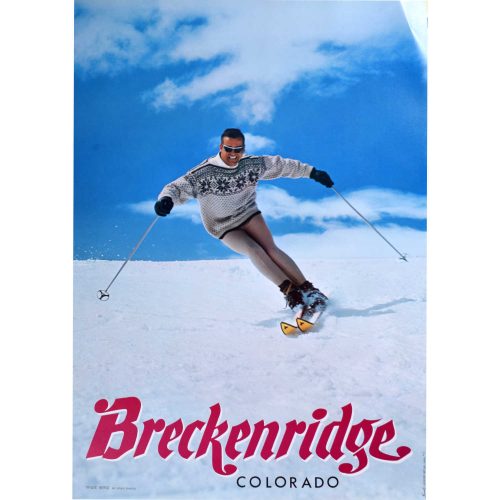
Breckenridge, Colorado Vintage Ski Poster USA (1967)
67 x 53 cm Printed by LooArt Press, Colorado Springs, Colorado, 1967 Travel poster for skiing in Breckenridge, Colorado, featuring a photograph of a smiling skier - Trygve Berge sporting Kneissl skis - and a rather cool pair of shades and jumper. Direct from the surplus stock of the printers, LooArt Press, which closed in the early 1970s. Condition: Excellent. -
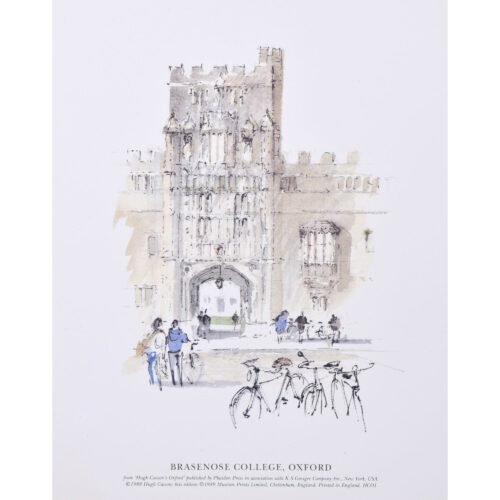
Hugh Casson (1910 - 1999)
Brasenose College, Oxford
Lithograph 30 x 24 cm Casson's view of Brasenose, complete with many a bicycle. Sir Hugh Casson was educated at Eastbourne College; St John’s College, Cambridge; and the Bartlett School of Architecture. Trained in the 1930s in the early modernist style, he taught at the Cambridge School of Architecture. After employment as a camoufleur during World War 2 by the Air Ministry, in 1948 he was appointed as director of architecture for the Festival of Britain. A close friend of the Royal Family, he undertook designs for the 1953 coronation, designed the interior of the Royal Yacht Britannia (“The overall idea was to give the impression of a country house at sea”), and taught the young Charles III to paint in watercolours. Amongst his architectural achievements are the Elephant House at London Zoo, the 1978 redevelopment of Bristol Docks, the Raised Faculty Building for The University of Cambridge, and a building for the Royal College of Art. He published a number of illustrated books, of which Casson’s Oxford and Casson’s Cambridge are probably the best known. A limited edition series of prints was produced from the paintings. Condition: very good; mounted to board. If you are interested, please email info@manningfineart.co.uk or call us on 07929 749056. Click here for other views of Brasenose College, Oxford. -

Joseph Skelton (1783 - 1871) after Frederick Mackenzie (1788 - 1854)
Brasenose College, Oxford with the Radcliffe Camera
Engraving 33 x 46 cm Published by Rudolph Ackermann (1764 - 1834). Frederick Mackenzie was a British watercolourist and architectural draughtsman. He first exhibited at the Royal Academy in 1804, and contributed eleven drawings between that year and 1828. He contributed to the Society of Painters in Water Colours exhibitions from 1813, becoming an associate in 1822, and a full member the following year. From 30 November 1831 until, his death he was treasurer to the society. In later life Mackenzie was no longer commissioned to illustrate books. Joseph Skelton was an a topographical and antiquarian engraver. He lived in Oxford for a time and became a Fellow of the Society of Antiquaries of London. His Oxford publications include the Oxonia Antiqua Illustrata; Antiquities of Oxfordshire, from drawings by F. Mackenzie; and the Pietas Oxoniensis, or Records of Oxford Founders. Rudolph Ackermann was an Anglo-German bookseller, inventor, lithographer, publisher and businessman. In 1795 he established a print-shop and drawing-school at 96 Strand. Here Ackermann set up a lithographic press and began a trade in prints. He later began to manufacture colours and thick carton paper for landscape and miniature painters. Within three years the premises had become too small and he moved to 101 Strand, in his own words "four doors nearer to Somerset House", the seat of the Royal Academy of Arts. Between 1797 and 1800 Ackermann rapidly developed his print and book publishing business, encompassing many different genres including topography, caricature, portraits, transparencies and decorative prints. Condition: generally very good; some staining to margins but print itself fine. If you are interested, please email info@manningfineart.co.uk or call us on 07929 749056. Click here for other Oxford views. -

Pieter van der Aa (1659-1733), after David Loggan (1634–1692)
Brasenose College, Oxford (1727)
Engraving 12 x 16 cm An eighteenth-century view of 'Le Nez de Bronze', or Brasenose, engraved by Pieter van der Aa after David Loggan, the noted engraver, draughtsman, and painter. Pieter van der Aa of Leiden was a Dutch publisher best known for preparing maps and atlases, though he also printed editions of foreign bestsellers and illustrated volumes. He is noted for the many engravings he produced after David Loggan's series of Oxford and Cambridge colleges and costumes. In 1727 Van Der Aa illustrated "Les Delices de la Grande Bretagne & de L'Irelande" by James Beeverell, the book in which this engraving appears. Condition: a good impression. If you’d like to know more, please email info@manningfineart.co.uk or call us on 07929 749056.

